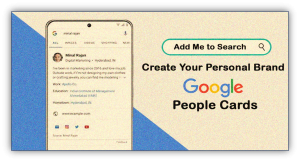In today’s hyper-connected era, the digital landscape is expanding at an unprecedented pace. Did you know that as of 2023, there are over 5.18 billion active Internet users worldwide? These numbers continue to surge, and amidst this digital revolution, web applications have emerged as the ultimate game-changers.
Web applications have broken the barriers of our online experiences, seamlessly integrating into our everyday lives. They play a crucial role in enhancing productivity, sparking social interactions, and transforming entertainment. By combining adaptability with superior functionality, web applications have ushered us into an era of boundless digital possibilities. Whether it’s catching up on your favorite Netflix show, managing your schedule with Google Calendar, or shopping on Amazon – web applications shape our online world.
In this article, we’ll explore what web applications are, their different types, and why they’ve become so crucial. We’ll also delve into ten popular examples that you likely interact with every day.
What is a Web Application?
A web application is a computer program stored on a remote server and accessed by users via a web browser. This design allows the application to be compatible with most standard computers and operating systems, without taking up memory on a user’s hard drive. You can access these applications from nearly any computer, provided you have an internet connection.
Types of Web Applications
Web applications come in various forms, each catering to a different set of requirements. Let’s delve into some common types:
1- Dynamic Web Application
Dynamic web applications generate data in real-time on the user’s request and the server’s response. These applications have a more complex setup than static ones, given their requirement for server-side processing.
For instance, social media platforms like Facebook and Twitter are dynamic web applications. They offer personalized experiences by updating and presenting new content based on user interactions, ranging from posts shared by friends to trending topics.
2- E-commerce Web Application
E-commerce web applications have revolutionized the shopping experience. They allow users to browse through a vast array of products, add items to their cart, and proceed to checkout for making online payments.
Amazon is a classic example of an e-commerce web application. From its intelligent product recommendations to its streamlined checkout process, Amazon is able to provide a seamless shopping experience, all thanks to the capabilities of its dynamic e-commerce web application. From order fulfilment to retaining customers, eCommerce web applications have become a full-fledged channel to grow and scale retail operations.
3- Progressive Web Application
Progressive web applications (PWAs) bridge the gap between traditional web apps and native mobile apps. They are built using web technologies but offer a user experience similar to native apps. They can work offline, send push notifications, and can be installed on the device’s home screen.
An example of a PWA is the Starbucks Coffee app. Even in offline mode, you can browse the menu, customize your drink, and add orders to the cart. Once you’re back online, you can finalize and pay for your order.
4- Animated Web Application
Animated web applications use animations to enhance user interaction and improve the overall user experience. They can use technologies like CSS, and JavaScript, or more advanced ones like WebGL for 3D graphics.
A website like the interactive music video “The Wilderness Downtown” by Arcade Fire shows how animations can create immersive web experiences. It uses Google Maps and WebGL to incorporate images of your childhood home into a music video.
5- Static Web Application
Static web applications are the simplest form of web applications. They are built using HTML, CSS, and possibly JavaScript, but they don’t change dynamically in response to user input or server-side processing. Instead, they deliver the same content to every user.
Blogs, personal portfolios, and informational websites are common examples of static web applications. They are typically quick to develop, easy to host, and require fewer resources to run, making them an ideal choice for simple, content-focused websites.
Top 10 The Most Popular Web Applications
Here’s a little insight on the world’s top 10 most popular web applications:
1. Gmail
Gmail, a free email service by Google, stands as a stellar example of a dynamic web application. It allows real-time interaction, letting users send and receive emails, create templates, and organize messages.
2. Google Docs
Google Docs, an online word processor, exemplifies real-time collaboration. Users can create, share, and edit documents simultaneously, transforming the way we work.
3. Google Analytics
Google Analytics tracks and reports website traffic, providing invaluable insights into user behavior and marketing effectiveness.
4. Microsoft Office 365
Microsoft Office 365 is a subscription-based suite of productivity tools. It includes applications like Word, Excel, and PowerPoint, enabling document creation, editing, and real-time collaboration.
5. Online Forms
6. Amazon
Amazon is the epitome of an e-commerce web application. It allows online transactions and shopping from a vast array of products.
7. Canva
Canva, a graphic design platform, offers a range of flyer templates and design elements, enabling users to create stunning visual content.
8. Facebook
Facebook, one of the most popular social media platforms, allows users to connect, share, and interact with each other globally, truly embodying a dynamic web application.
9. WhatsApp
WhatsApp, a messaging app, allows users to send text and voice messages, make voice and video calls, and more, all over the internet.
10. Netflix
Netflix, a leader in the online streaming sector, provides a wide variety of content on-demand, altering the landscape of entertainment.
Benefits of Web Applications
Web applications bring a plethora of advantages to users and businesses alike. Their accessibility, scalability, and flexibility make them a preferable choice in a world increasingly dependent on the internet.
1. Universal Accessibility
Web applications are available anywhere you have an internet connection, bringing your work, entertainment, or social interaction to your fingertips, whether you’re at home, at the office, or traveling.
2. Cost-Effectiveness
Web applications reduce the need for software installation, updates, and troubleshooting on individual devices, resulting in significant cost savings. Plus, since they’re browser-based, they eliminate the need to develop different versions for various operating systems.
3. Easy Maintenance
With a web application, updates are made directly on the 10gbps dedicated server. Users always access the latest version, eliminating compatibility issues and reducing IT workload.
4. Scalability
Web applications can handle the growth of your user base or data. With proper server infrastructure, web applications can serve a handful or millions of users.
5. Customization
Web applications can be easily customized to serve the unique needs of a business, offering functionalities that cater to specific user requirements, processes, and workflows.
6. Secure and Unified Data
Web applications centralize data storage, increasing data security. There’s less risk of data loss as the data is stored on a server, and backups are easier to perform.
How do Web Applications Work?
Understanding how web applications work can shed light on their efficiency and versatility. They follow a client-server model, involving interaction between the user’s browser (client) and the web application’s server.
The Request-Response Cycle
The functioning of web applications revolves around the request-response cycle. The user, through the browser, sends a request to the server. The server processes this request and sends back a response, which is displayed to the user. This continuous exchange facilitates a dynamic interaction between the user and the web application.
Server-Side Processing
Server-side processing is where the core logic of the application resides. When a request arrives, the server executes the necessary operations – these could be calculations, database queries, or other processing tasks. Once done, it generates a response and sends it back to the client.
Client-Side Processing
Client-side processing primarily involves presenting the data to the user in a structured and meaningful way. This could include tasks like rendering the user interface, handling user input, and providing interactive elements on the page. It often employs technologies like HTML, CSS, and JavaScript.
Database Interactions
Web applications frequently interact with databases to store and retrieve data. This could be user data, operational data, or any other information the application needs to function. The server queries the database as part of its processing tasks.
Session Management
As HTTP, the protocol web applications use, is stateless (i.e., it doesn’t remember past requests), web applications often employ sessions to keep track of user-related data between requests. This is essential for functionalities like user authentication, shopping carts, and more.
In essence, the synergy between the client-side and server-side processing, coupled with efficient database interactions and session management, enables web applications to deliver their functionalities seamlessly.
How Hoff & Mazor Can Help You in Building A Legendary Web App
Creating a web application might seem like a challenging task. It’s a path filled with technical hurdles and complex decisions, from choosing the right architecture to implementing the finest details of user experience. But what if you could embark on this journey guided by experts? That’s where Hoff & Mazor come into the picture.
Hoff & Mazor is a beacon in the world of software development, shedding light on the intricate process of building web applications. They don’t just build web applications; they build successful digital experiences that encapsulate your vision and your users’ needs. With a keen understanding of contemporary design and advanced technology, they craft solutions that are visually compelling and technically impressive.
Their team is steeped in a wealth of experience spanning custom software development, web development, mobile app development, and UX/UI design. This rich diversity of skills means they can mold their approach to fit your specific project, ensuring you receive a solution that’s tailored to your needs.
Here’s how Hoff & Mazor can make a difference in your web application development project:
- Customized Solutions: Hoff & Mazor’s team invests time to understand your goals, needs, and the challenges you face to create a web application built from the ground up, just for you.
- Expert Guidance: With Hoff & Mazor, you’re not just hiring a developer; you’re partnering with a team of experienced professionals who will guide you through each step of the process.
- Cutting-Edge Technology: Your web app will be built using state-of-the-art tools, latest trends and technological advancements, setting you ahead in the digital race.
- User-Centric Design: Hoff & Mazor’s team of UX/UI designers ensures that your web application is not only functional but also intuitive and engaging for a delightful user experience.
A new digital world awaits, and Hoff & Mazor can be your guide. Don’t let the complexity of web application development hinder your progress. Equip your business with a powerful, custom web application and propel yourself toward success.







